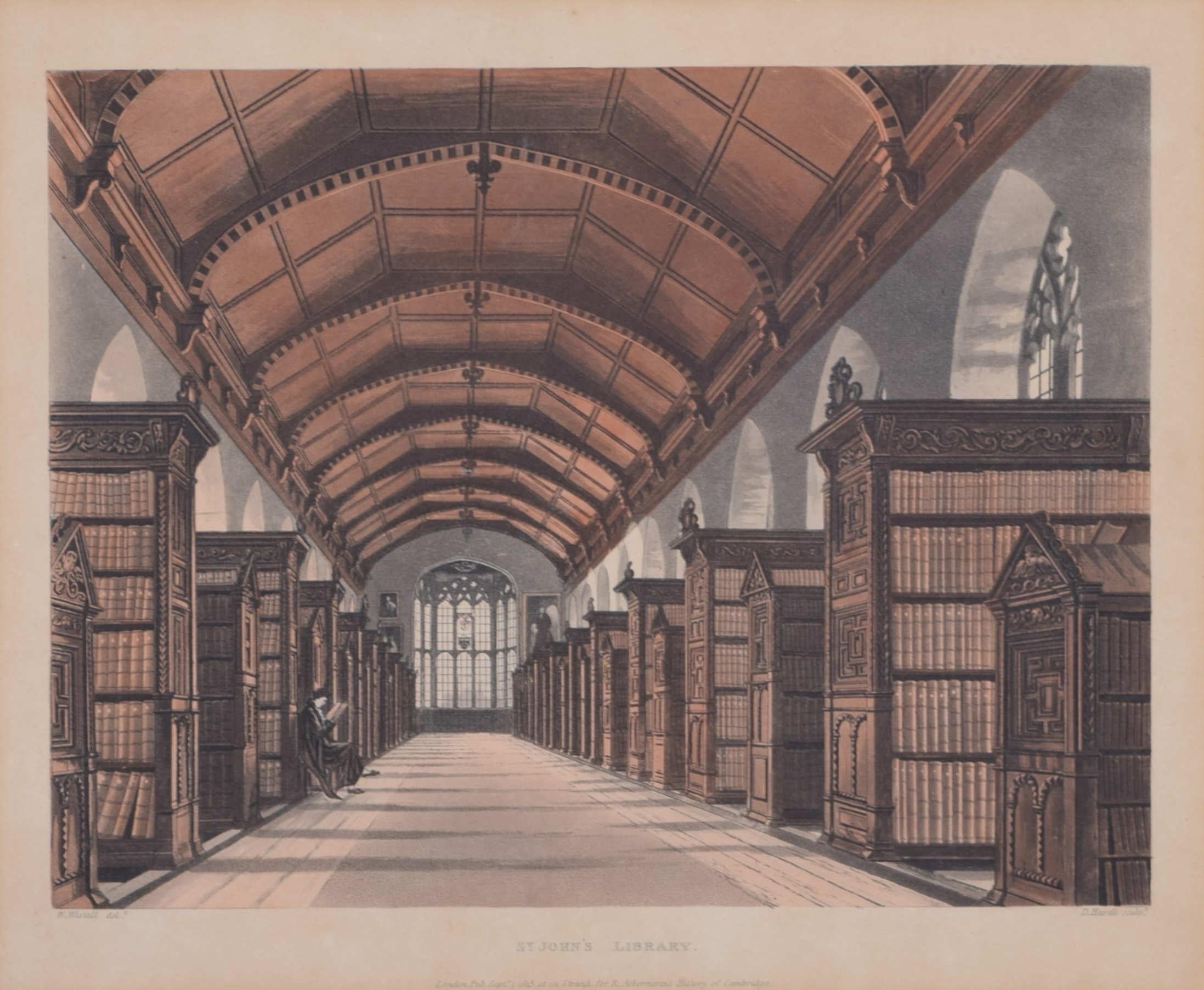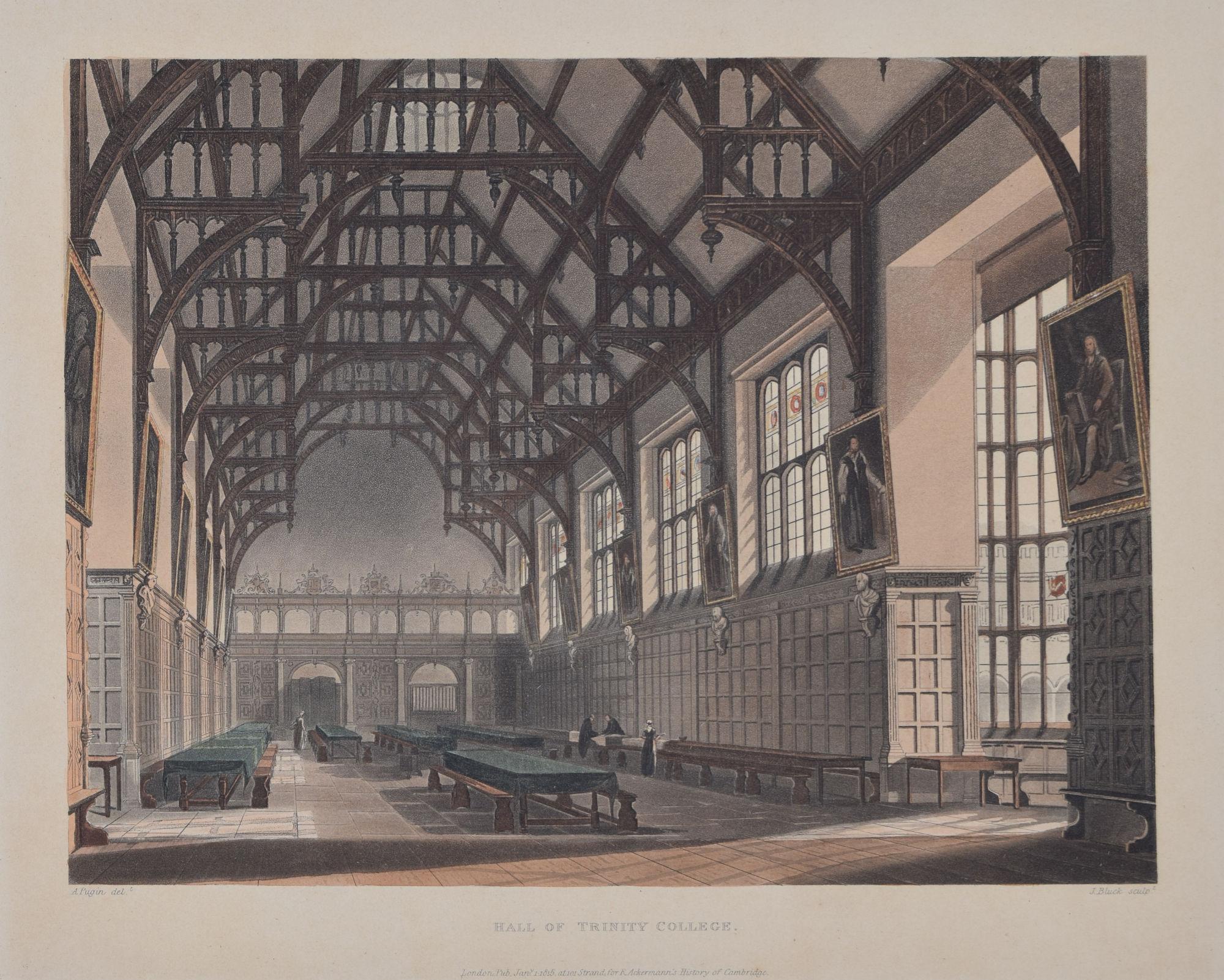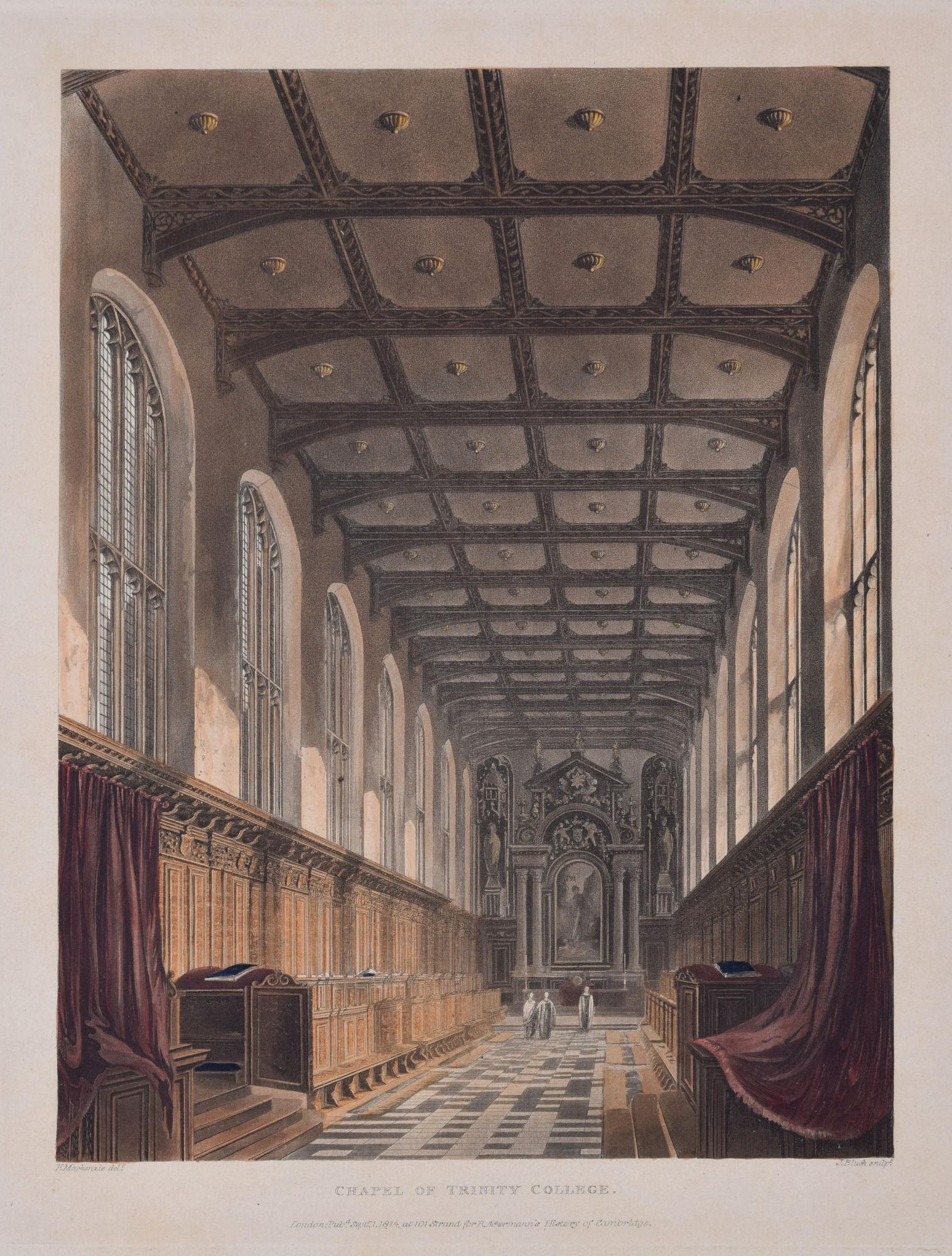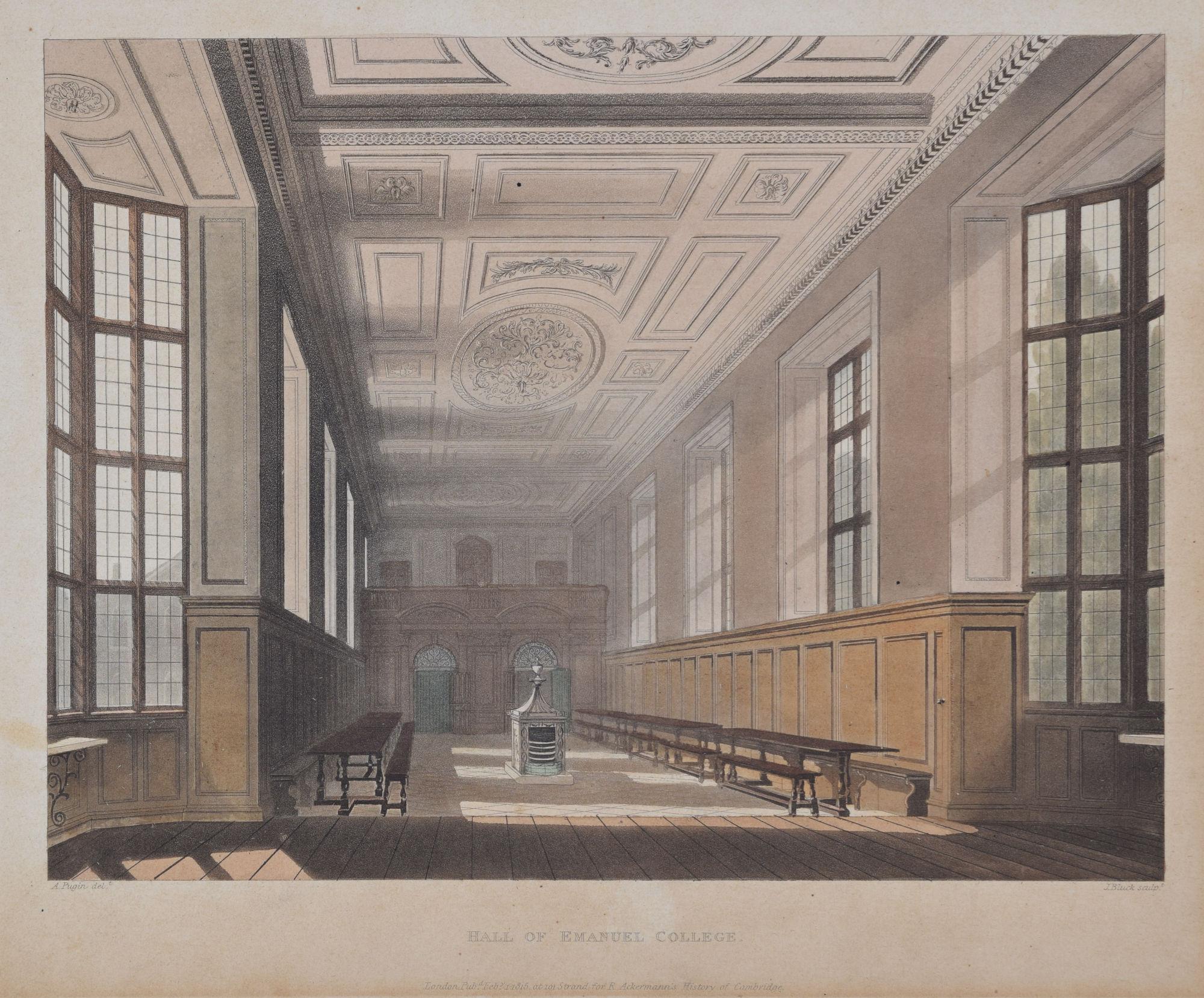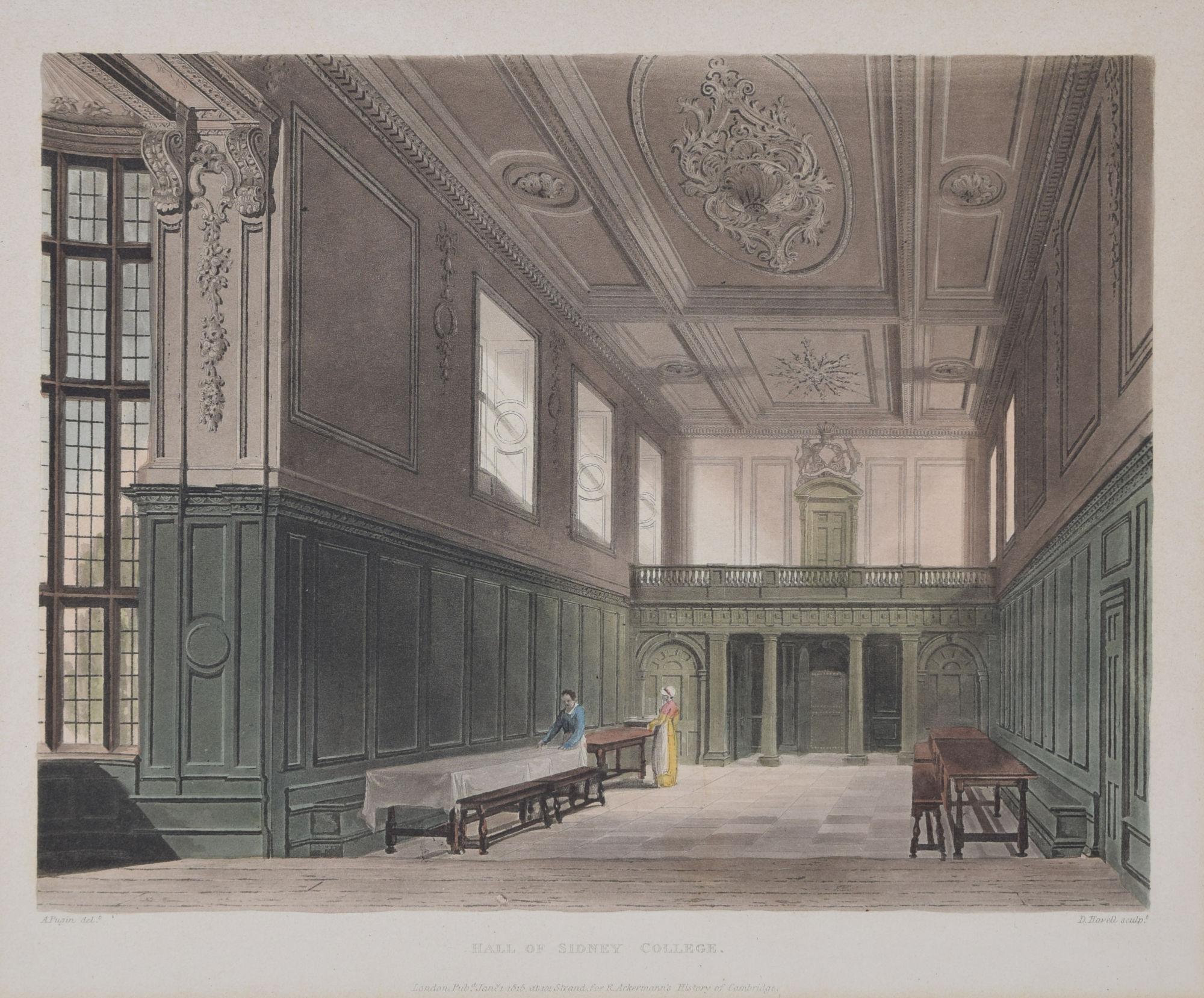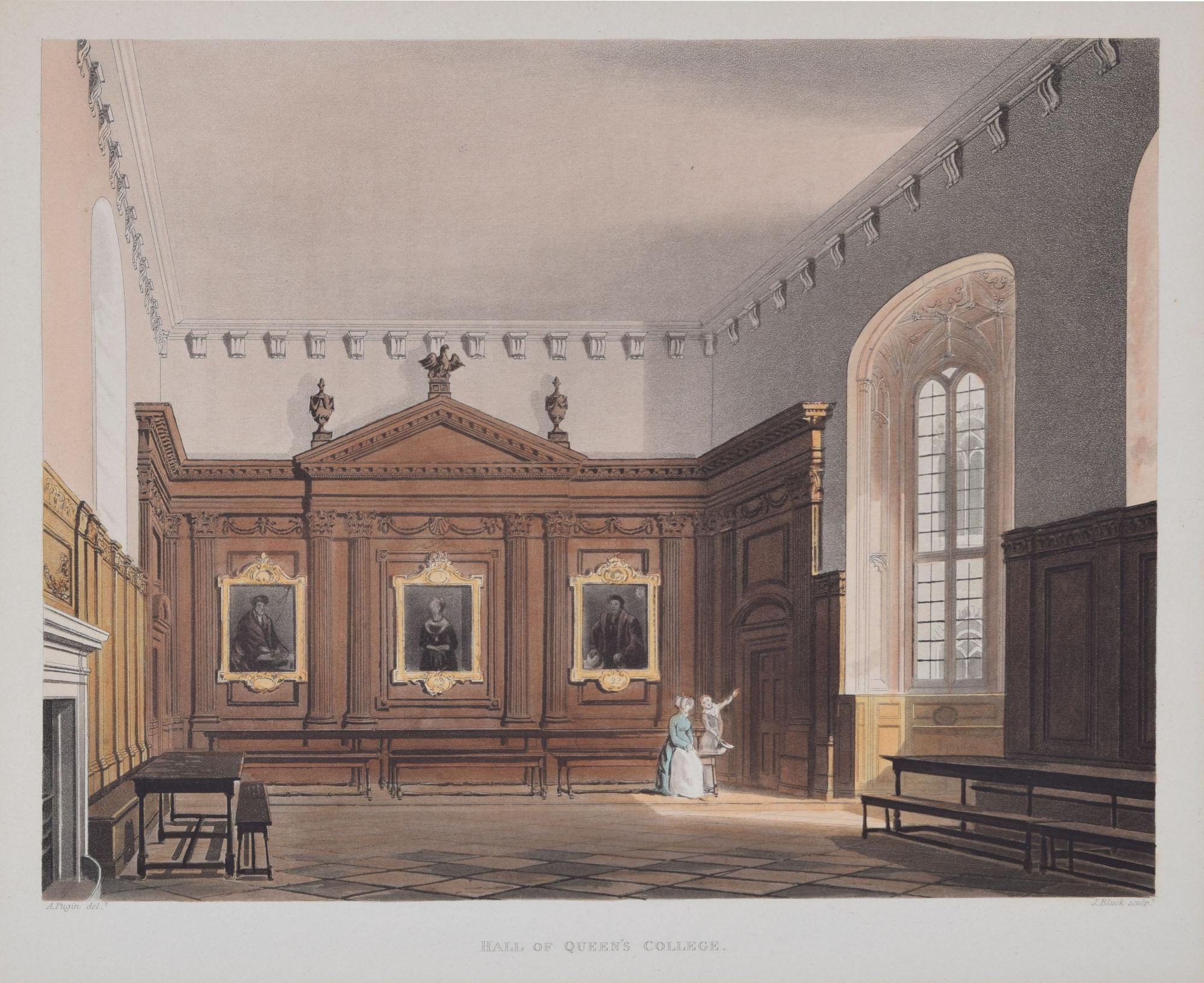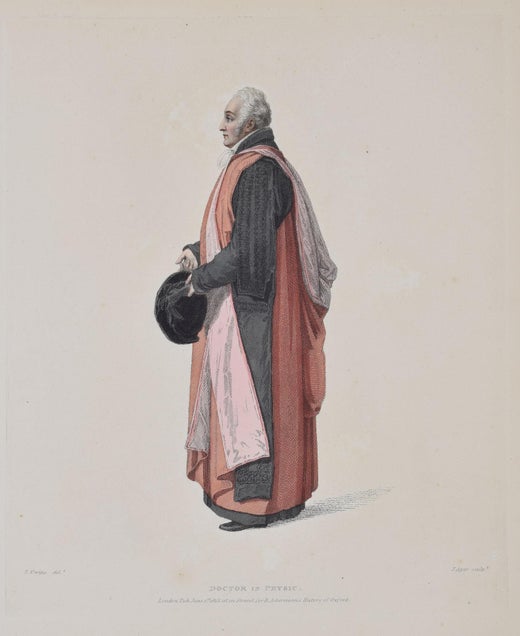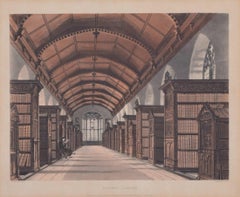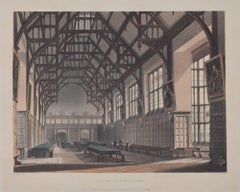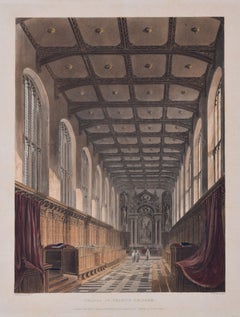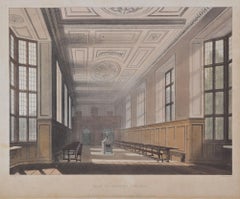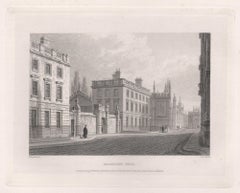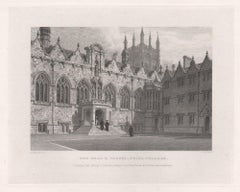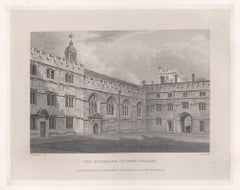Items Similar to Library of Trinity College, Cambridge engraving by Havell after Pugin
Want more images or videos?
Request additional images or videos from the seller
1 of 7
Rudolph AckermannLibrary of Trinity College, Cambridge engraving by Havell after Pugin1814
1814
$457.34
£340
€394.81
CA$643.79
A$703.37
CHF 368.64
MX$8,398.41
NOK 4,665.13
SEK 4,350.14
DKK 2,948.61
About the Item
To see our other Oxford and Cambridge pictures, including an extensive collection of works by Ackermann, scroll down to "More from this Seller" and below it click on "See all from this Seller" - or send us a message if you cannot find the view you want.
Daniel Havell (1785 - 1822) after Augustus Charles Pugin (1762 - 1832)
Library of Trinity College, Cambridge (1814)
Aquatint with original hand colouring
20 x 27 cm
Published by Rudolph Ackermann (1764 - 1834).
An engraving of the library of Trinity College, Cambridge, from Ackermann's 'A History of the University of Cambridge, Its Colleges, Halls and Public Buildings'.
Augustus Charles Pugin was an Anglo-French artist and architectural draughtsman. Pugin produced views of London, jointly creating the illustrations for the 'Microcosm of London' published by Rudolph Ackermann in 1811, followed by plates for Ackermann's books about Westminster Abbey, Oxford and Cambridge universities, and Winchester College. His later works included illustrations for Specimens of Gothic Architecture (1821–1823), The Royal Pavilion at Brighton (1826), Architectural Antiquities of Great Britain (1826), Specimens of the Architectural Antiquities of Normandy (1827), Illustrations of the Public Buildings of London (1825 to 1828), Paris and its Environs (1829 to 1831), and Examples of Gothic Architecture (1831). He also produced a book of furniture designs called Gothic Furniture, and assisted architects with detailing for their gothic designs. He ran a drawing school at his house in Bloomsbury.
Daniel Havell was a member of the Havell family of Reading, Berkshire, England, which included a number of notable engravers, etchers and painters, as well as writers, publishers, educators, and musicians. Daniel and his brother Robert set up in partnership as aquatint engravers. Soon Daniel began to work independently, engraving plates for Rudolph Ackermann's History of Cambridge (1815) and hid history of various public schools including Eton, Winchester, and Rugby (1816), as well as a celebrated views of St Paul's Cathedral (1818) and various other London landmarks for Ackermann's Repository of Arts.
Rudolph Ackermann was an Anglo-German bookseller, inventor, lithographer, publisher and businessman. In 1795 he established a print-shop and drawing-school at 96 Strand. Here Ackermann set up a lithographic press and began a trade in prints. He later began to manufacture colours and thick carton paper for landscape and miniature painters. Within three years the premises had become too small and he moved to 101 Strand, in his own words "four doors nearer to Somerset House", the seat of the Royal Academy of Arts. Between 1797 and 1800 Ackermann rapidly developed his print and book publishing business, encompassing many different genres including topography, caricature, portraits, transparencies and decorative prints.
- Creator:Rudolph Ackermann (1764 - 1834)
- Creation Year:1814
- Dimensions:Height: 7.88 in (20 cm)Width: 10.63 in (27 cm)
- Medium:
- Period:
- Framing:Framing Options Available
- Condition:Generally very good; slight toning to within platemark.
- Gallery Location:London, GB
- Reference Number:1stDibs: LU795315078632
Rudolph Ackermann was an Anglo-German bookseller, inventor, lithographer, publisher and businessman. In 1795 he established a print-shop and drawing-school at 96 Strand. Here Ackermann set up a lithographic press and began a trade in prints. He later began to manufacture colours and thick carton paper for landscape and miniature painters. Within three years the premises had become too small and he moved to 101 Strand, in his own words "four doors nearer to Somerset House", the seat of the Royal Academy of Arts. Between 1797 and 1800 Ackermann rapidly developed his print and book publishing business, encompassing many different genres including topography, caricature, portraits, transparencies, and decorative prints.
About the Seller
4.8
Vetted Professional Seller
Every seller passes strict standards for authenticity and reliability
Established in 2014
1stDibs seller since 2017
361 sales on 1stDibs
Typical response time: 13 hours
- ShippingRetrieving quote...Shipping from: London, United Kingdom
- Return Policy
More From This Seller
View AllSt John's College, Cambridge Library engraving by the Havells for Ackermann
Located in London, GB
To see our other Oxford and Cambridge pictures, including an extensive collection of works by Ackermann, scroll down to "More from this Seller" and below it click on "See all from this Seller" - or send us a message if you cannot find the view you want.
D Havell (1785 - 1822) after William Westall (1781 - 1850)
The Library of St John's College, Cambridge (1815)
Hand-coloured aquatint
24 x 29.5 cm
Published by Rudolph Ackermann...
Category
1810s Realist Prints and Multiples
Materials
Aquatint
Trinity College, Cambridge Hall engraving by Bluck after Pugin for Ackermann
Located in London, GB
To see our other Oxford and Cambridge pictures, including an extensive collection of works by Ackermann, scroll down to "More from this Seller" and below it click on "See all from th...
Category
1810s Prints and Multiples
Materials
Aquatint, Engraving
Chapel of Trinity College, Cambridge engraving by John Bluck for Ackermann
Located in London, GB
To see our other Oxford and Cambridge pictures, including an extensive collection of works by Ackermann, scroll down to "More from this Seller" and below it click on "See all from th...
Category
1810s Realist Prints and Multiples
Materials
Aquatint
Emmanuel College, Cambridge hall engraving by Bluck after Pugin for Ackermann
Located in London, GB
To see our other Oxford and Cambridge pictures, including an extensive collection of works by Ackermann, scroll down to "More from this Seller" and below it click on "See all from th...
Category
1810s Interior Prints
Materials
Aquatint
Sidney Sussex College, Cambridge engraving by Havell after Pugin for Ackermann
Located in London, GB
To see our other Oxford and Cambridge pictures, including an extensive collection of works by Ackermann, scroll down to "More from this Seller" and below it click on "See all from th...
Category
1810s Interior Prints
Materials
Aquatint
Queens' College, Cambridge hall engraving by Bluck after Pugin for Ackermann
Located in London, GB
To see our other Oxford and Cambridge pictures, including an extensive collection of works by Ackermann, scroll down to "More from this Seller" and below it click on "See all from th...
Category
1810s Interior Prints
Materials
Aquatint
You May Also Like
Magdalen Hall. Oxford University. Antique C19th engraving
Located in Melbourne, Victoria
'Magdalen Hall'
Engraving by John Le Keux after Frederick Mackenzie, 1837. From James Ingram's 'Memorials of Oxford'.
135mm by 175mm (platemark)
200mm ...
Category
19th Century Naturalistic Landscape Prints
Materials
Engraving
The Hall & Chapel, Oriel College. Oxford University. Antique C19th engraving
Located in Melbourne, Victoria
'The Hall & Chapel, Oriel College'
Engraving by John Le Keux after Frederick Mackenzie, 1837. From James Ingram's 'Memorials of Oxford'.
135mm by 175mm ...
Category
19th Century Naturalistic Landscape Prints
Materials
Engraving
The Quadrangle of Jesus College. Oxford University. Antique C19th engraving
Located in Melbourne, Victoria
'The Quadrangle of Jesus College'
Engraving by John Le Keux after Frederick Mackenzie, 1837. From James Ingram's 'Memorials of Oxford'.
135mm by 175mm (...
Category
19th Century Naturalistic Landscape Prints
Materials
Engraving
South Front of Queen's College. Oxford University. Antique C19th engraving
Located in Melbourne, Victoria
'South Front of Queen's College'
Engraving by John Le Keux after Frederick Mackenzie, 1837. From James Ingram's 'Memorials of Oxford'.
135mm by 175mm (p...
Category
19th Century Naturalistic Landscape Prints
Materials
Engraving
Paris - Bibliotheque du Conservatoire des Arts et Metiers, lithograph, 1861
By Philippe Benoist
Located in Melbourne, Victoria
'Bibliotheque du Conservatoire des Arts et Metiers', tinted lithograph by Felix Benoist (1818-1896).
From a series of lithographs depicting the famous buildings of Paris - 'Paris da...
Category
Late 19th Century Naturalistic Landscape Prints
Materials
Lithograph
Gresham College
By George Vertue
Located in Middletown, NY
Etching with engraving on cream laid paper with a Garden of Holland or Maid of Dort Pro Patria watermark, 11 x 14 1/4 inches (278 x 361 mm), thread margins. Lettered with the title in a cartouche at the top-center sheet, continuing "a Latere Occidentali Prospeus AD MDCCXXXIX," with numbers over the image at right that correspond to a key 1 to 29, and with publication details: "Georgius Vertue Londini delineavit et Sculpsit anno MDCCXXXIX". Multiple expert repairs, notably a Y-shaped, expert paper tape repair on the verso. Handling creases, toning. All issues are consistent with age. An impression of this work may be viewed in the permanent collection of the British Museum, registration No. 1880,1113.3963.
A bird's eye view of the college in Broad Street, London, showing the courtyard, adjoining stable yard to the right, and the buildings at the back.
This work was included in Frederick Crace...
Category
Early 18th Century English School Landscape Prints
Materials
Handmade Paper, Engraving, Etching
More Ways To Browse
Gothic Antique Furniture
Antique Engraving Plates
Royal Pavilion
Vintage Jazz Dress
Banksy Happy Choppers
Jane Goldman
Joni Frankel
Peter Max Green Dress
Roy Lichtenstein Oval Office
Shaker Stove
Sleeping Beauty 1959 Lobby Card
Waiting For The Boys
Benjamin Buckley
C Riom
Charles Fazzino 3 D
David Hockney Rue De Seine
Desire Guilmard
Dial M For Modern
